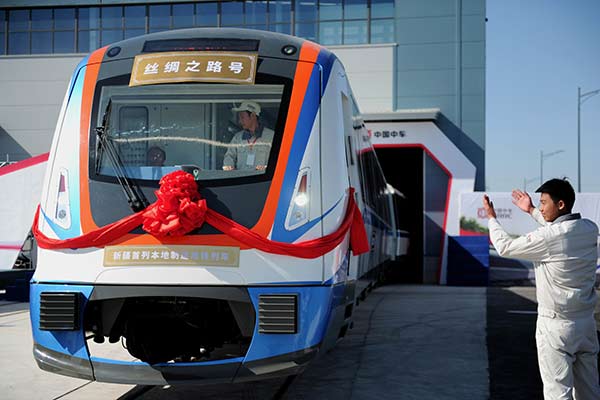
Local governments have been urged to curb new production capacity of urban rail vehicles as part of China’s ongoing efforts to curb industrial overcapacity and prevent debt risks.
Provincial-level governments should strictly control the expansion of new vehicles for urban rail transit projects, and cities with a vehicle capacity utilization rate lower than 80 percent on average in the past two years will not be allowed to increase capacity, according to a guideline issued on Tuesday by the National Development and Reform Commission, the nation’s top economic regulator.
Provincial-level governments have been asked to enhance guidance to enterprises to help avoid blind investment and maintain capacity at reasonable levels, according to the guideline.
An official with the NDRC who declined to be named said data would be calculated by local governments and the regulator would collate the information to better improve supervision.
The guideline comes at a time when some enterprises have significantly increased production in the past few years amid massive construction of urban rail transit projects.
The regulator plans to tighten control over massive expansion of urban rail transit projects.
The commission is revising benchmarks for urban projects approval with likelihood to further raise standards as part of efforts to prevent financial risks, according to people familiar with the matter.
The new guideline, still under discussion, is based upon the guideline issued in 2003, where it set standards for cities intending to apply for rail transit projects, with specific requirements in key fields such as local fiscal revenue and population, the people said.
Cities planning to build subway projects need to meet a number of conditions, with minimum fiscal revenue of 10 billion yuan ($1.57 billion), municipal GDP of 100 billion yuan and population of 3 million, according to the guideline issued in 2003.
The official with the NDRC declined to comment on further steps that would be introduced.
A total of 43 cities have been allowed to build urban transit projects, mainly metro and light railway projects, according to data from China Rail Transit Network.
Xue Qitang, an expert and lawyer advising the commission on public and private partnership projects, said further efforts to tighten regulation reflect the fact that the central government is putting higher emphasis on preventing risks, rather than helping local governments to meet their requirements.


